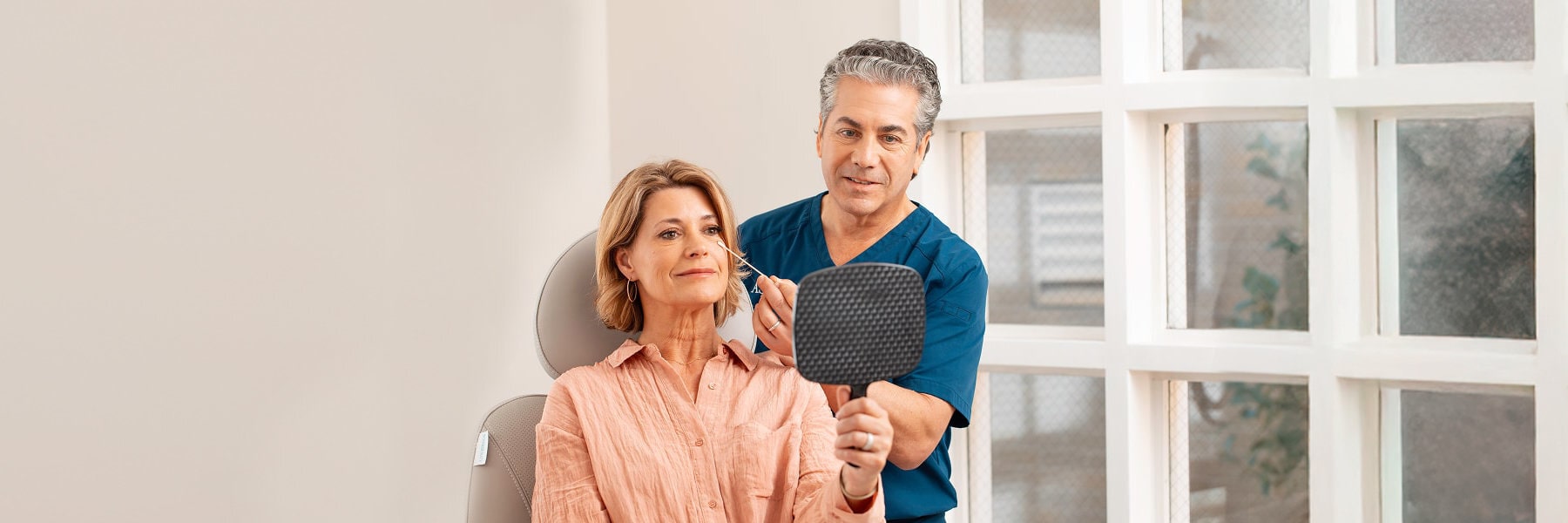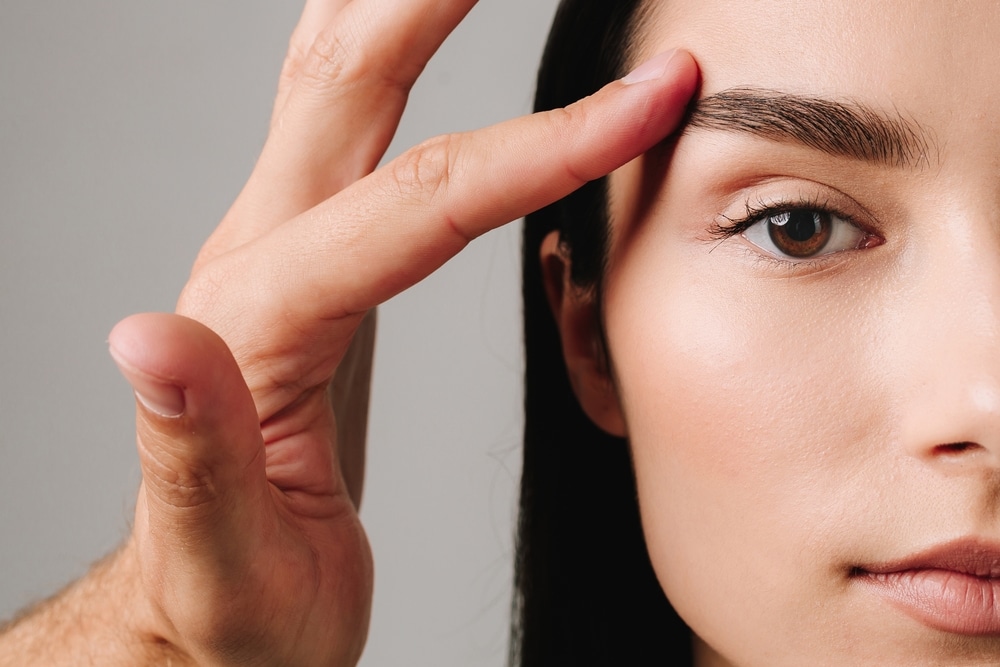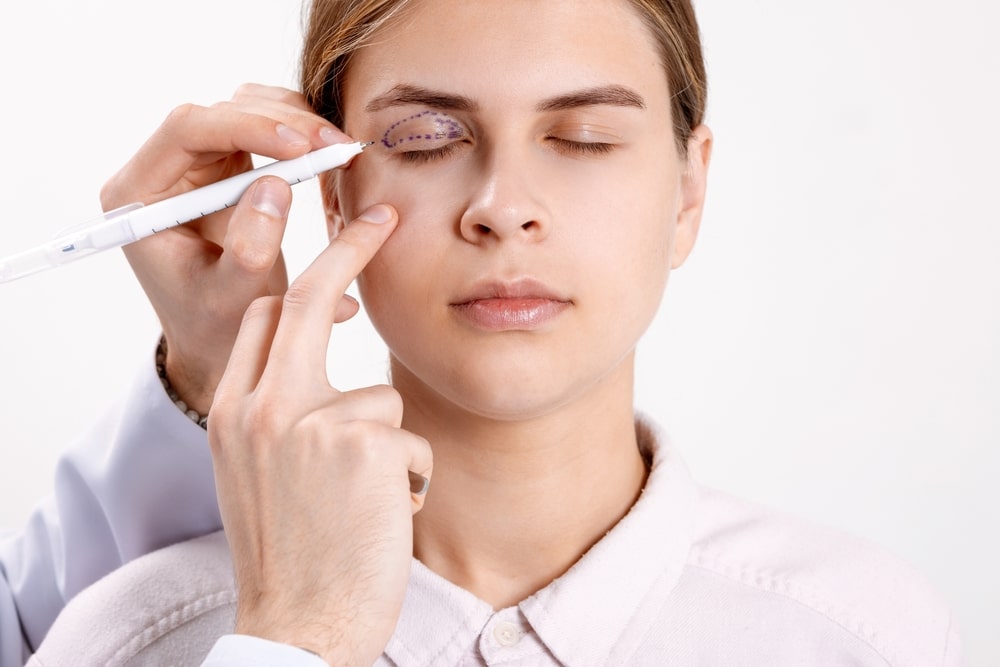If your droopy eye lids are bothering you, chances are we can help!
Four months ago, Susan came to my office. Like many patients that I see she was interested in non-invasive ways to turn back the hands of time. We discussed Botox and fillers as well as laser or light-based rejuvenation treatments. She mentioned that she wanted to avoid major surgery, would not consider a facelift or anything that required being put under general anesthesia. Despite this, she mentioned that her upper eyelids really bothered her because she felt they made her look old and tired. Fortunately for Susan we had a solution that didn’t require being put under.
Susan was actually a great candidate for a procedure known as an upper eyelid blepharoplasty also known as an eyelid lift. This is a procedure that can be done in an office-based setting completely with local anesthesia without the need to be “put under.” This makes the procedure safer and the recovery faster. After several years of performing Mohs Surgery and reconstructive surgery for skin cancer I learned this technique from Henry Baylis, M.D. who had been the head of oculoplastic surgery at UCLA. I even had him operate with me in my office when I first started performing this technique. That was many moons ago.
In order to undergo an upper eyelid blepharoplasty, you need a responsible adult to drive you to and from the office. We use a sterile marking pen to mark the natural eyelid crease. We then mark out the excess skin. It is always better to err on the side of taking out less rather than more. We then inject local anesthesia. Once your eyelids are numb and you can’t feel anything we remove the excess skin. Stitches are then placed and stay in for 7 days. Post-operative effects are minimal and temporary. Minor swelling and bruising usually disappears within 2 weeks. Aftercare is minimal and entails applying cold to minimize swelling and ointment to where the stitches are. At day 7 sutures are removed. Usually, the incision line fades to the point that it is not noticeable.
If your droopy lids are bothering you, chances are we can help. Maybe you were under the impression that in order to treat this problem you would need major surgery and be put to sleep under general anesthesia. Fortunately, that is not the case, and the solution may be easier than you think. Call us today.
















